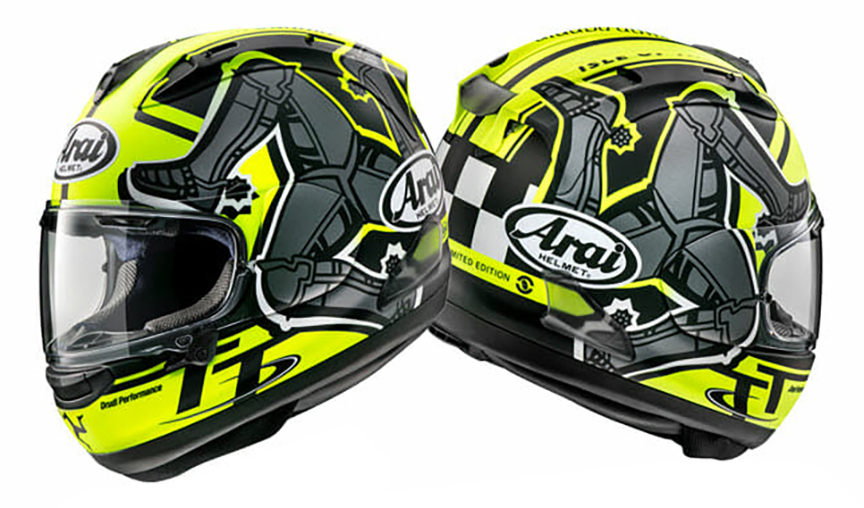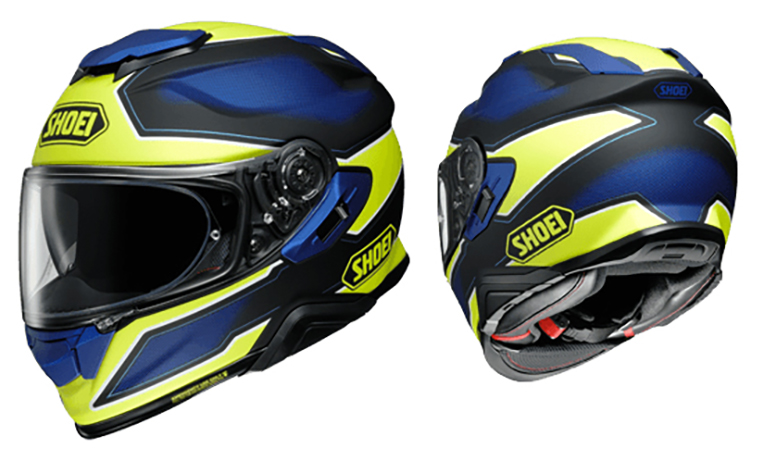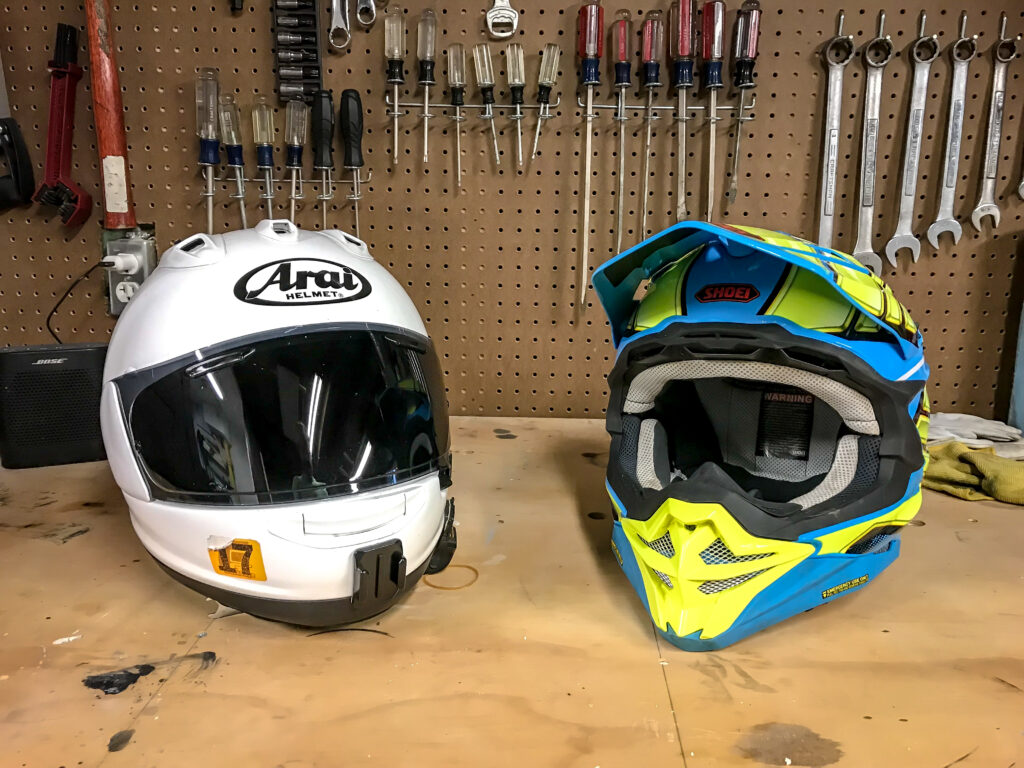One of the most common questions asked by helmet dealers is “What’s the difference between Arai and Shoei?” Despite the technological changes and innovations over the past decade, the Arai vs Shoei is still considered a desirable choice for many riders looking for a premium helmet. So what sets these two high-end Japanese manufacturers apart? Today’s article helmetme.com will compare Arai vs Shoei-the basic features of these two helmets to clarify the question at the beginning of the article.
Contents
Arai vs Shoei- Comparison of 2 Popular Helmet Brands
Arai vs Shoei has a number of characteristics in common: both are of Japanese origin, both claim to offer the best rider-focused design and safety, and both have helmet certification as standard. European safety and both are renowned worldwide for their products as proven by their outstanding use in motorsport. While their reputation is defined in motorsport, Arai vs Shoei both offer a broad lineup that caters to the travel, adventure, and sports markets. So what’s the difference?
The Origin
Arai Helmet was founded in 1937 by Hirotake Arai. After World War II, Japan operated as a closed economy and it was difficult to import motorcycle helmets. Arai adopted a fiber-reinforced plastic (FRP) shell and switched from cork to an expanded polystyrene inner liner in 1958. This has been the base standard for helmet manufacturing for the past 60 years. While American manufacturer Bell Helmets introduced to the world the first full-face helmet, the Bell Star, in 1963, Arai soon followed suit. Arai introduced Japan’s first full-face helmet in March 1967. Through it all, its mission is to provide top-quality motorcycle gear that anyone can feel comfortable when using.

Eitaro Kamata founded the Kamata Polyester Company in 1954 before shifting production to motorcycle helmets in 1959. Unlike Arai, who switched to producing motorcycle helmets for personal use, Kamata immediately began designing the Shoei Helmet with a focus on motor racing. One of their first achievements was being used as the official Honda racing helmet in 1965. Fiberglass was the material of choice for constructing helmet shells in the early 1970s. That continued up until 1976 when Shoei unveiled the GR-Z, the first helmet made of carbon fiber and Kevlar. It was a ground-breaking discovery and is still regarded as one of Shoei’s greatest successes. They also invented the first non-vehicle visor system in 1990, and ventilation in helmet design.

Shell Construction
Hirotake Arai first used a plastic outer shell structure that he lined with cork for personal use while riding. In 1958, he started using an inner lining expanded with polystyrene. Arai’s case design builds on their philosophy of “R75 shape”, which refers to a continuous curve radius of at least 75 mm. It’s the Peripheral Belt technology that they proudly claim creates better impact resistance. Arai claims better dispersion of kinetic energy as well as a reduced chance of the helmet sticking to rough surfaces, thus reducing unwanted rotation. Their shells are constructed using a proprietary mechanically expanding fiber mat whose chemical composition varies depending on the helmet.
For Shoei, they use a highly sophisticated integrated matrix housing for ultimate protection. Again, with Shoei, the definition of optimal protection also includes taking into account the rider’s comfort. These shells are designed from various layers of proprietary fibers. An AIM shell has five layers: an inner fiberglass layer, followed by special fibers, 3D organic fibers, organic fibers, and finally an outer fiberglass layer. The AIM shell adds the sixth layer of high-performance organic fibers between special fibers and 3D organic fibers. Shoei claims that this allows them to build a sturdier shell that is also lightweight. The shell itself is also more resilient to shock absorption while providing additional strength and puncture resistance.

Shape
The most important consideration in determining a helmet’s fit is its internal shape. Arai manufactures helmets with three different inner head shapes, which vary by individual model. These three head shapes include the long oval, round oval, or intermediate oval. Because of this, the fit is not common in all Arai helmets. In addition, Arai offers a wide selection of interior linings and cheek pads in various thicknesses. Additional adjustments can be made using micro spacers inside the cheek pads or by swapping linings between helmet models.
As for Shoei, they produce almost all helmets with a single inner shape of an intermediate oval. Although there is some slight variation between models, Shoei helmets will usually fit 80% of the population in the US perfectly. Shoei is not the ideal choice for riders with too round or long oval heads. Similar to Arai, Shoei also offers two cheek pads and linings of different thicknesses and can be swapped or adjusted for the best fit.
EPS Liner
Expanded polystyrene, or EPS, is an impact-absorbing inner lining made of foam. The cells in the lining will be broken down one by one during a collision, delaying the impact from reaching your skull. The cells can no longer shield your head once they have been destroyed. This is why it’s crucial to switch out your helmet following a collision.
Depending on the model, Arai uses one-piece EPS with up to five different foam densities. The amount of force needed to crush the foam is the major consideration when discussing “density” in regard to EPS liner. For protection from high-speed collisions, a thicker, heavier foam is utilized, but for protection from slower, low-speed impacts, a softer, less dense foam is used. To maximize impact protection, Arai places layers of foam with varying densities in the right places on the helmet’s EPS lining.
Shoei’s EPS liner, in contrast to Arai’s one-piece liner, has a dual-layer, multi-density design. For immediate impact absorption, a softer density foam is placed on top of the inner EPS liner. The EPS liner’s exterior layer is constructed from medium-density foam that is protected at greater speeds. To further customize the helmet’s protection, certain models contain an additional multi-density function. The EPS liner used in Shoei’s VFX range of off-road helmets underwent a significant redesign in 2018. According to Shoei, the Energy Delivery System (MEDS) lessens rotational impact up to 15% less than the preceding VFX-W helmet. Up to this point, both Arai vs Shoei have used any internal sliding plane system to reduce rotational forces.

Durability
Both Arai and Shoei offer substantial warranties up to 5 years after the date of purchase or 7 years from the date of manufacture. I haven’t actually heard any complaints about Shoei from riders. Simply said, these helmets don’t seem to crack! When it malfunctions, you won’t be covered by a warranty and most likely won’t be able to fix it yourself.
But until then, regardless of the state of your present hat, if you’re a stickler for general safety standards, it’s time to buy a new one. While Arai has certain issues of its own, the advantage is that every component of the Arai helmet is repairable and replaceable. This is especially helpful because the side covers and vents can be changed if your hat breaks for whatever reason. Arai will fix it for you if you are unable to do it yourself.
Safety standards
While both Arai and Shoei put safety at the heart of their mission statement, they look at it from different angles. According to Arai’s design philosophy, human safety criteria come first while creating helmets. Arai’s design meets and exceeds the requirements set forth by SNELL and the Department of Transportation (DOT) in the United States. If you reside in Europe, Arai helmets sold there generally pass SNELL tests as well as ECE safety requirements.
Arai’s refusal to use the faceless face covering system has nothing to do with applicable safety regulations, but rather Arai’s internal regulations. They felt that including recesses in the housing to incorporate a flush-mounted face shield would compromise the integrity and safety of their helmets. The Pro Shade system was developed for this purpose as well.
Shoei’s views on safety go beyond the SNELL and DOT standards, but they also take rider comfort into consideration. In order to provide optimum comfort and let the driver fully concentrate on driving, Shoei defines its idea of “active safety” as “additional advancements made by Shoei.” The incorporation of elements like a shell-free face shield system, which lessens wind resistance and consequently causes neck fatigue, is the result of Shoei’s focus on comfort as a safety factor like wind rustling. Here is a short video to analyze Arai vs Shoei.
Video: Source from Champion Helmets (Youtube)
https://www.youtube.com/watch?v=7LkvY0rUsWk&ab_channel=ChampionHelmets
Conclusion
As stated at the beginning of the article, there is no clear winner in the Arai vs Shoei race. I trust both Shoei and Arai helmets to keep me safe in a variety of settings. On the track, I like Arai’s fit. However, for going off-road, Shoei was clearly superior. Overall, both brands are a great choice and guarantee you will never be disappointed with your purchase. Hopefully, our thoughts and experiences here will tell you which brand is better for you, both for your vehicle and your style.
Read more:
